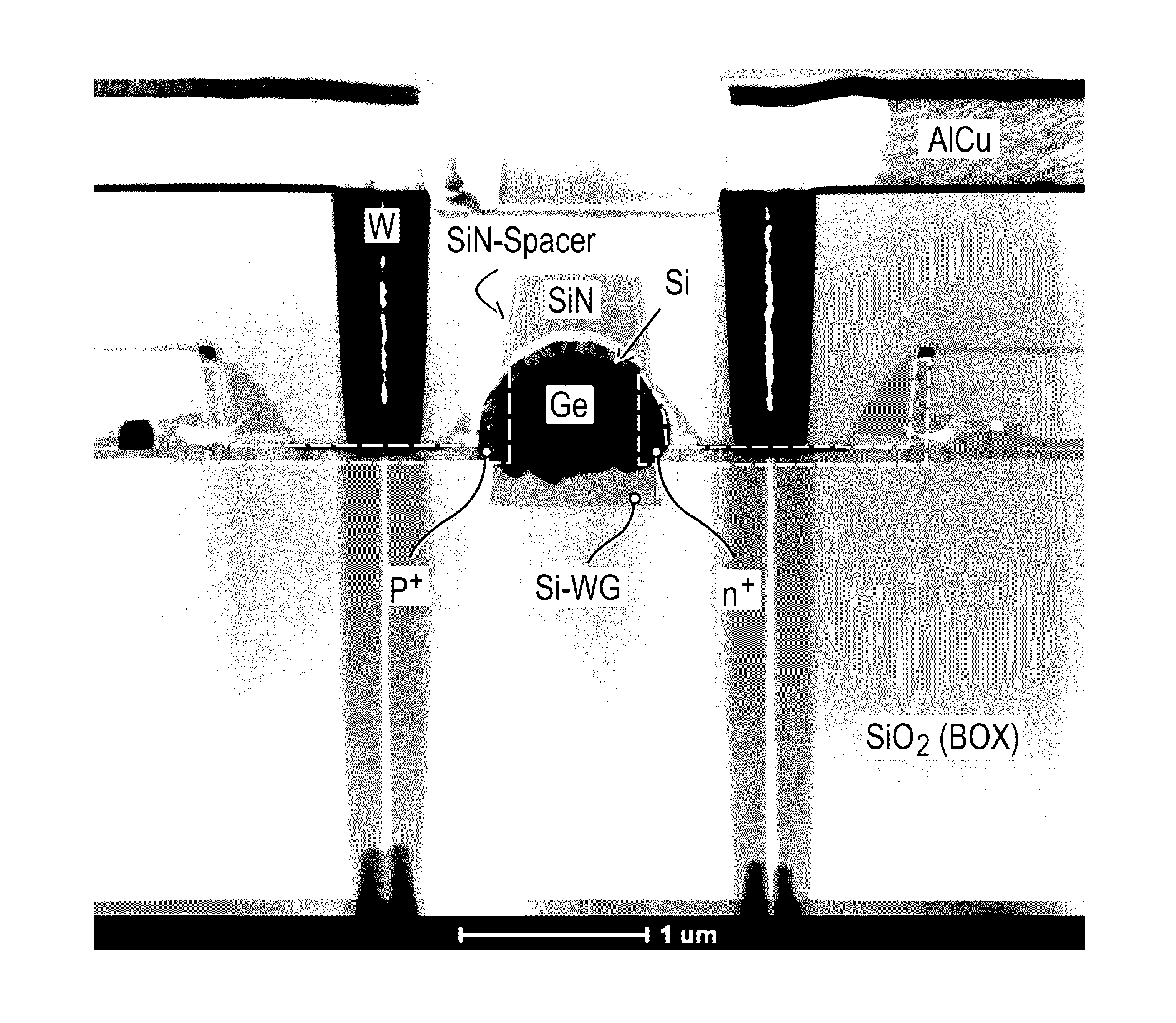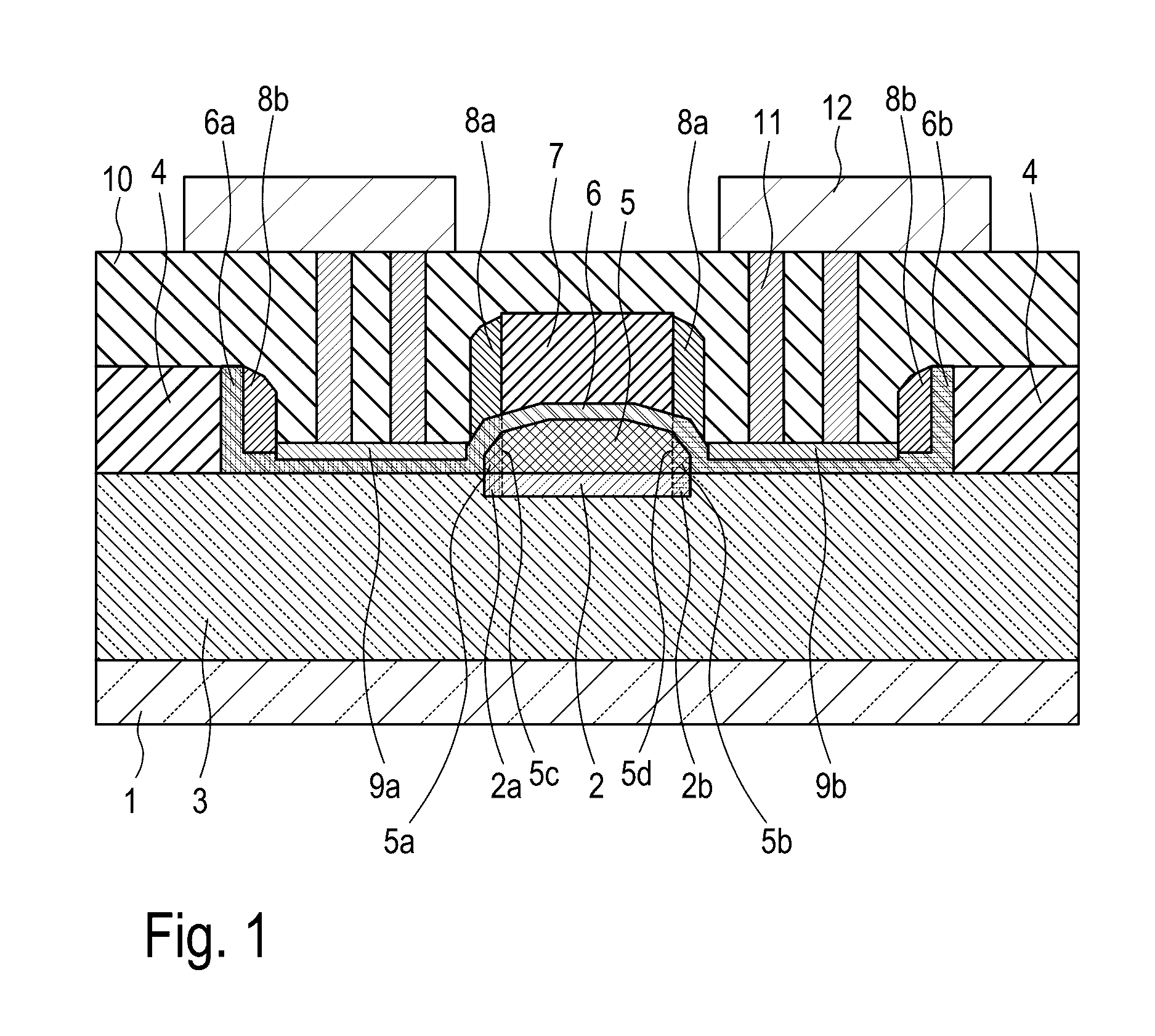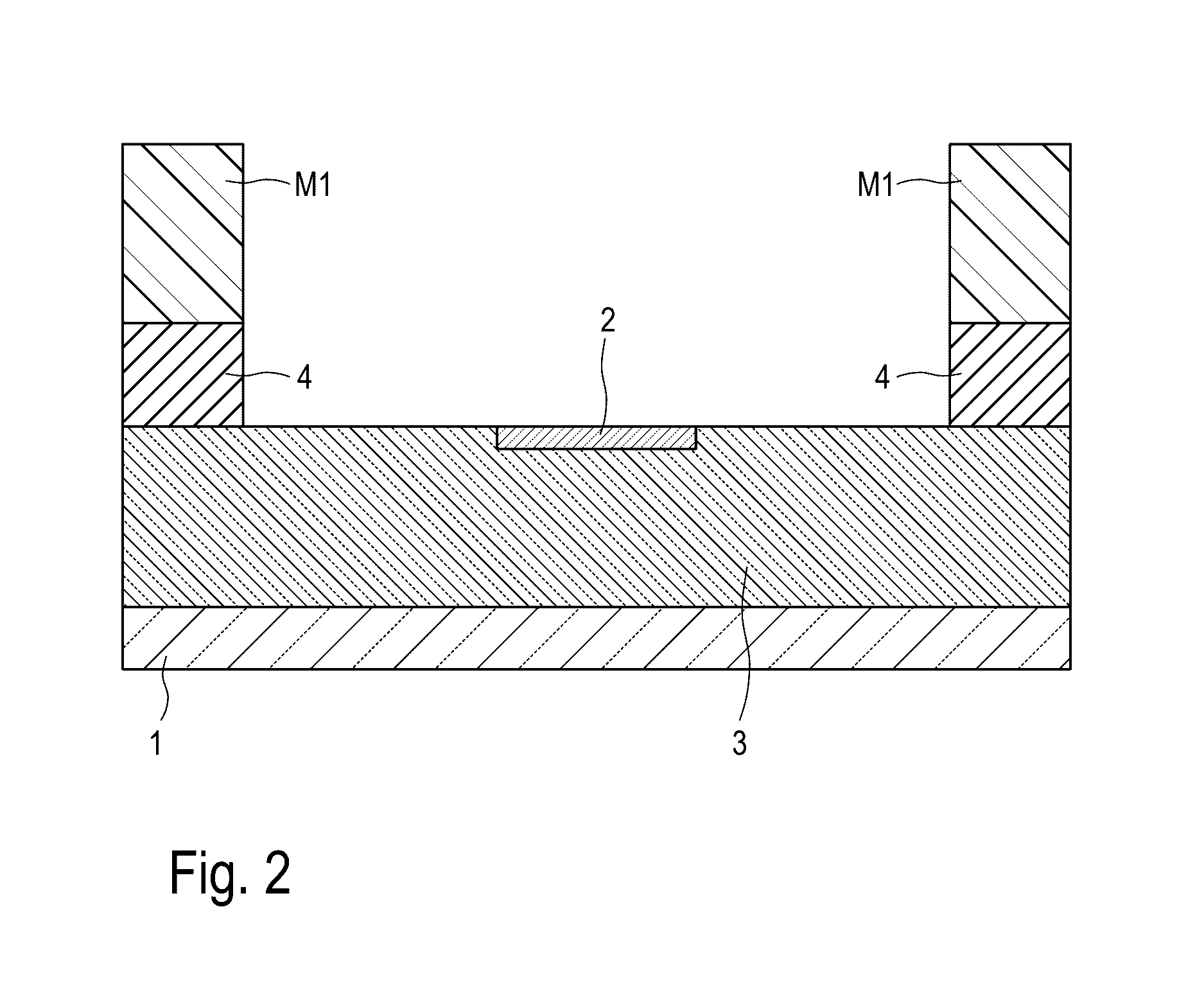High-speed germanium pin photodiode
a germanium pin and photodiode technology, applied in the field of diodes, can solve the problems of limiting the responsivity of the diodes, high responsivity and high bandwidth, and achieve the effect of low contact resistan
- Summary
- Abstract
- Description
- Claims
- Application Information
AI Technical Summary
Benefits of technology
Problems solved by technology
Method used
Image
Examples
first embodiment
[0050]FIG. 1 illustrates a PIN photodiode according to the invention. On a monocrystalline silicon waveguide consisting of p- and n-doped regions 2a and 2b and intrinsic region 2 and framed laterally and from below by a silicon dioxide layer 3 vertically adjoining a silicon substrate 1, there is a germanium layer containing doped regions 5a and 5b and intrinsic region 5. This germanium layer is covered with a silicon layer consisting of doped regions 6a and 6b and an undoped region 6. As essential aspect for the PIN photodiode according to the invention is that the silicon waveguide below the germanium layer does not project laterally beyond the latter. The entire diode structure is laterally enclosed by an insulator layer 4, preferably by a silicon oxide layer. The diode structure is also covered with an insulating strip 7, which, as explained in more detail below, allows self-aligned production of intrinsic regions 2, 5 and 6 with p- and n-doped regions 2a, 2b, 5a, 5b, 6a and 6b. ...
second embodiment
[0061]A process for producing the germanium PIN photodiode according to the invention shall now be described.
[0062]FIG. 12 shows the state of the region, in which the germanium PIN diode is subsequently produced, after production of a silicon waveguide 2 and subsequent etching of a window in an insulating layer 4 by means of a resist mask M1. Unlike the process for producing the first embodiment (see FIG. 2), waveguide 2 extends here laterally on both sides beyond the window etched in layer 4.
[0063]FIG. 13 shows the stage in the diode production process after subsequent selective, epitaxial growth of an undoped germanium layer 5 on silicon waveguide 2. In contrast to the production process for the first embodiment (see FIG. 3), a germanium layer thickness is chosen that is significantly greater than the thickness of insulator layer 4. The aim is to avoid facet formation underneath the top edge of layer 4.
[0064]FIG. 14 shows the diode structure after a Ge-CMP step which follows germa...
PUM
 Login to View More
Login to View More Abstract
Description
Claims
Application Information
 Login to View More
Login to View More - R&D
- Intellectual Property
- Life Sciences
- Materials
- Tech Scout
- Unparalleled Data Quality
- Higher Quality Content
- 60% Fewer Hallucinations
Browse by: Latest US Patents, China's latest patents, Technical Efficacy Thesaurus, Application Domain, Technology Topic, Popular Technical Reports.
© 2025 PatSnap. All rights reserved.Legal|Privacy policy|Modern Slavery Act Transparency Statement|Sitemap|About US| Contact US: help@patsnap.com



